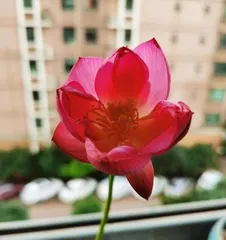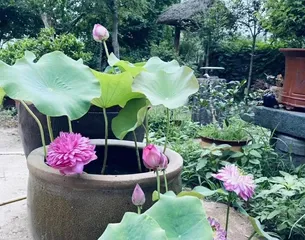The lotus, an aquatic plant rich in cultural heritage and unique charm, not only beautifies the environment when placed indoors but also purifies the air and enhances the quality of life. However, caring for lotuses is not a simple task; they require meticulous attention to ensure healthy and robust growth indoors. This article will introduce indoor lotus care methods, allowing everyone to experience the freshness, comfort, and beauty that lotuses bring to their homes.

I. Choosing a Lotus Variety Suitable for Indoor Care
If you want to grow lotuses indoors, the first step is to choose a variety suitable for the indoor environment. When selecting a lotus, opt for one with good flowering, well-developed roots, full leaves, and no pests or diseases. At the same time, ensure that the environmental conditions required by the lotus match your home's conditions.
II. Understanding Lotus Light Requirements
Lotuses have high light requirements, so when growing them indoors, they need to be placed in a sunny location. However, excessive sunlight can damage the lotus, so it's important to choose suitable lighting conditions based on the specific variety's needs and your home's environment.

III. Understanding Lotus Temperature Requirements
Lotuses prefer a warm and humid environment. When growing them indoors, maintain a suitable indoor temperature, generally between 18°C and 25°C. During hot summer weather, you can increase the humidity around the lotus to keep its stems and leaves moist.
IV. Maintaining Lotus Humidity
Lotuses also have high humidity requirements. When growing them indoors, it's necessary to maintain appropriate humidity. You can increase the humidity around the lotus by misting, waving a damp towel, or placing a bowl of water nearby. At the same time, avoid keeping the lotus in a constantly damp environment for too long to prevent pests and diseases.
V. Regular Water Changes
Lotuses require frequent water changes, generally once a week. When changing the water, remove the lotus, discard the old water, and replace it with fresh, clean water.

VI. Timely Leaf Removal
When growing lotuses indoors, it's important to remove dead leaves promptly to prevent rotting, which can lead to pests and diseases and damage the plant.
VII. Pest and Disease Prevention and Control
During the growth process, lotuses can inevitably be affected by pests and diseases. When growing them indoors, it's crucial to focus on prevention and control, which can be achieved through fertilization and spraying insecticides.
VIII. Proper Fertilization
Lotuses need a supply of nutrients during their growth, so they require regular fertilization. Generally, applying fertilizer once every two weeks is sufficient.
IX. Controlling Lotus Growth Rate
Lotuses grow relatively fast, so when growing them indoors, it's necessary to control their growth rate. This can be done through pruning, adjusting light exposure, and changing the temperature.
X. Paying Attention to the Lotus Dormancy Period
Lotuses also have a dormancy period during their growth cycle, usually in winter. During this period, reduce the amount of water and fertilizer, and place the lotus in a warm, sunny location to encourage it to regrow.
XI. Regularly Cleaning Lotus Leaves
Dust and dirt can accumulate on lotus leaves. When growing them indoors, it's necessary to clean the leaves regularly to keep them clean and healthy.
XII. Lotus Propagation
Lotuses can be propagated by division or sowing, but when growing them indoors, it's important to control the propagation rate to avoid affecting the plant's growth and development.
XIII. Timely Pruning of Lotus
The stems and leaves of a lotus will continue to grow. If not pruned in a timely manner, it can lead to an unattractive shape. When growing lotuses indoors, it's necessary to prune the stems and leaves as needed to maintain a good shape.
XIV. Adjusting the Lotus Position
When growing lotuses indoors, it's important to adjust their position to adapt to different environmental conditions. For example, during hot summer weather, you can move the lotus to a cooler place to avoid overheating.
XV. Filling the Room with Lotus Fragrance, Bringing Vitality Indoors
By following the above indoor care methods, we can ensure that lotuses grow healthily and robustly indoors. The beauty and charm of the lotus not only allow us to appreciate the beauty of nature but also bring freshness, comfort, and vitality to our homes. Let's work together to create a fresh water town and fill our rooms with the fragrance of lotuses.